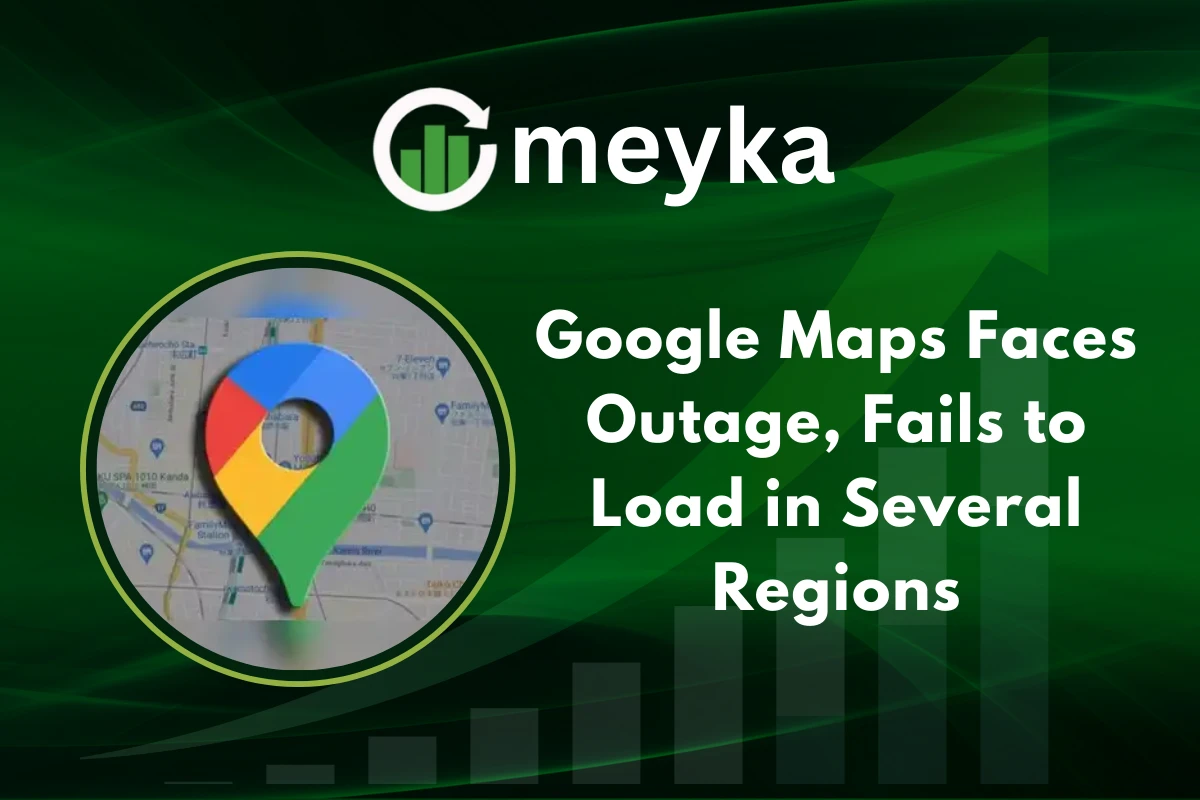Google Maps Faces Outage, Fails to Load in Several Regions
Millions worldwide rely on Google Maps every day for commute directions, delivery routing, and local discovery. Today’s incident left thousands of mobile users unable to get directions, view live traffic, or load map tiles on their phones. Reports arrived from the United States, Europe, Asia, and Australia, showing the outage touched multiple time zones and sectors and affected both consumers and businesses.
News sites including Yahoo and Lonelybrand documented user reports and regional impacts as the story unfolded.
Google Maps outage: What happened across regions

The issue began in the early afternoon Pacific Time when many Android and iOS users found the app would not render map tiles. Instead of full street detail and place pins, users often saw blank or partly loaded map outlines.
Downdetector recorded a sudden surge in reports beginning around 2:58 PM EDT and peaked with several thousand incident reports during the outage window. Regional outlets and tech sites confirmed the pattern across multiple cities, while the web version of Google Maps in many cases remained usable.
Why Google Maps failed to load for millions of users
Google’s Maps Platform status page described the incident as “errors when starting to load map tiles & starting some maps services when using Google Maps Platform SDKs.” That points to problems in the backend tile-serving infrastructure or API access for mobile SDKs. In short, phones could not fetch the visual layer that makes maps usable.
Google’s engineering teams reported mitigation work and later noted signs of recovery after rolling out fixes. This was a platform-level failure affecting mobile SDKs, not individual GPS or cellular networks.
How Google Maps outage impacted businesses and daily life
The disruption had immediate, practical effects. Delivery and logistics companies rely on live routing and ETA calculations; when maps and place data vanish, routes must be planned manually and deliveries slow.
Rideshare pickups became confusing in some cases when drivers could not see precise pickup locations. Small retailers that embed Google Maps on their websites briefly lost direction links and preview maps, which can reduce walk-in traffic and reservations.
Anecdotal regional reports echoed the impact: New York drivers reported longer routes and extra calls to customers, Sydney commuters sought alternate transit apps or offline routes, and London businesses checked their listing visibility after map previews failed to load.
While many users shifted to Apple Maps or the web version temporarily, the outage underlined how heavily daily routines and commerce depend on a single mapping provider.
User reactions to the Google Maps outage on social media
Social platforms were a key verification channel. Monitoring accounts posted early alerts and users flooded the timeline with short reports and workarounds. Examples captured during the incident include:
“Google Maps is reportedly down for many users at the moment. Are you one of them?” — @statusisdown.
“User reports indicate problems with Google Maps since 2:58 PM EDT.” — @downdetector.
Individuals also posted, “How am I supposed to drive home?,” and many said they temporarily switched to Apple Maps or downloaded offline directions. Those live posts helped reporters and engineers triangulate the outage timing and regional spread.
What experts say about Google Maps service reliability
Infrastructure and mapping experts remind us that global map services are complex ecosystems made of CDNs, caches, APIs, and regional data centers. When a tile-serving layer or SDK misbehaves, the effect is rapid and widespread because thousands of apps and websites depend on the Maps Platform.
Past incidents with Google Cloud and other Google services have shown that a single configuration or caching issue can cascade. Experts recommend resilience steps: cache important tiles, enable offline map regions on devices, and consider multi-provider fallbacks for mission-critical flows.
Google Maps downtime and the future of navigation apps
This outage is a reminder that even market-leading platforms can fail. For everyday users, practical fixes are simple and immediate: update the Maps app, clear app cache or storage, use the web version while the mobile app recovers, or download offline map areas for your key routes.
Google’s support pages list those troubleshooting steps. For businesses and developers, the structural response is stronger redundancy: local caching, multi-provider strategies, and automated monitoring tied to incident alerts.
Google has said it will publish a post-incident analysis once its internal review is complete, a welcome step for transparency and technical learning.
Why is Google Maps not working today?
Because mobile apps could not fetch required map tiles from Google’s backend; the Maps SDK and Navigation SDK showed errors and were under mitigation.
Which regions reported the highest outage issues?
Reports concentrated in the US, parts of Europe, Asia, and Australia. Downdetector and regional outlets logged the heaviest spikes in large metro areas.
How are businesses coping with Google Maps downtime? Many depend on cached routes, manual dispatch, or alternate APIs. Delivery fleets fall back to operator routing and drivers’ local knowledge when automated maps fail. Experts recommend testing fallback strategies regularly.
Conclusion
The Google Maps outage showed how modern travel, delivery and local commerce increasingly depend on a single mapping platform. While services recovered for many users and the web version often stayed available, the mobile disruption highlighted the need for better redundancy, clearer status communication, and simple user fallbacks like offline maps.
Google’s promised post-incident analysis will be essential reading for engineers, businesses, and policymakers. For now, download offline regions for critical routes, keep a secondary navigation app handy, and monitor Google’s Maps status for official updates.
FAQ’S
Yes, some users may experience temporary issues accessing Google Maps during an outage.
Glitches can occur occasionally due to server updates or connectivity problems.
Go to Settings → Apps → Google Maps → Storage → Clear Cache to reset temporary files.
Restart the app, clear cache, or update to the latest version to resolve most glitches.
Loading issues often happen due to weak internet, app glitches, or server outages.
Outages are typically caused by server downtime, maintenance, or network disruptions.
Malfunctions usually arise from outdated app versions, corrupted cache, or network errors.
Yes, VPNs can affect location accuracy and sometimes block certain map features.
Yes, by downloading offline maps, Google Maps can function without Wi-Fi or mobile data.
Disclaimer
The above information is based on current market data, which is subject to change, and does not constitute financial advice. Always do your research.






